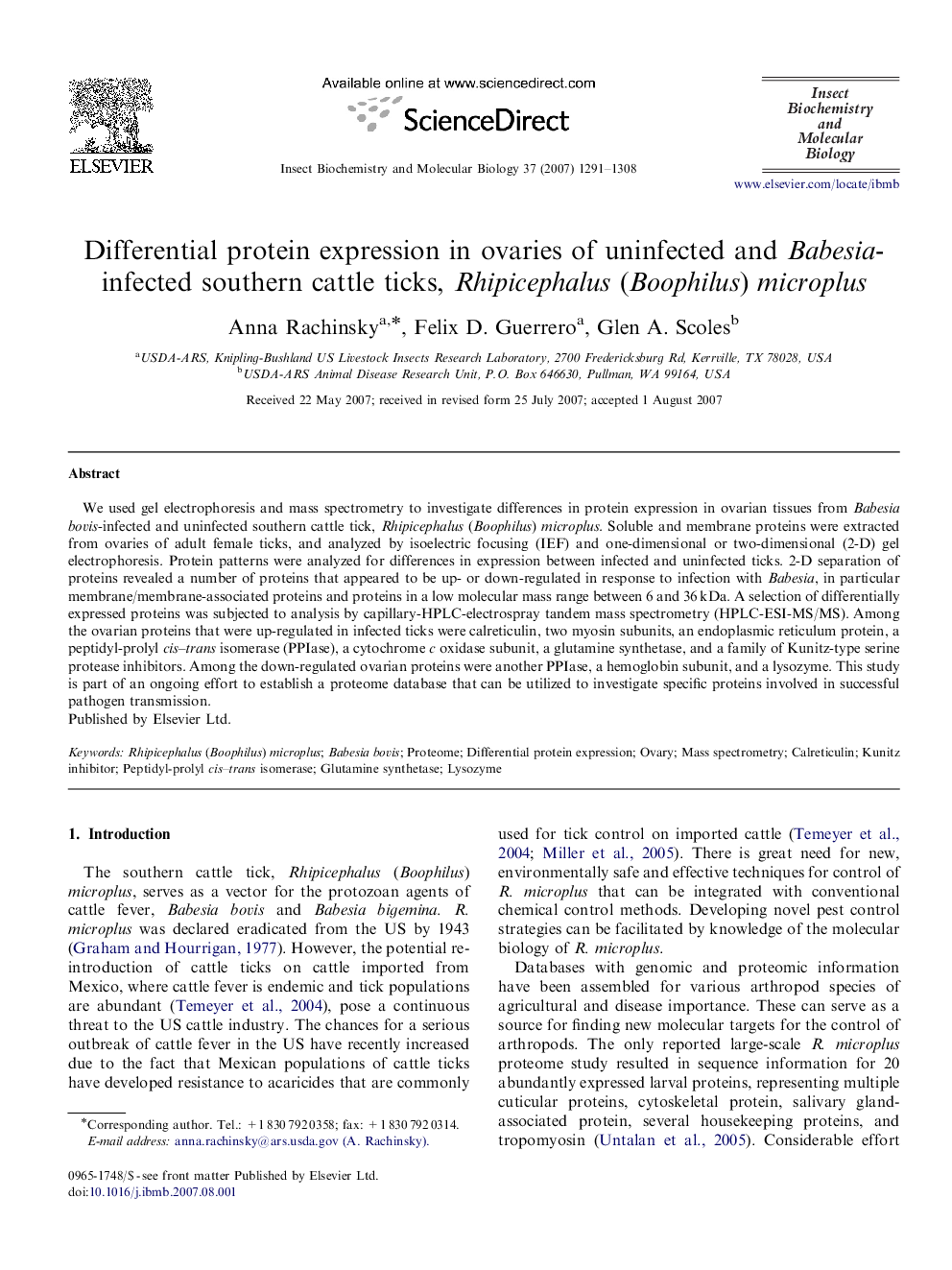| Article ID | Journal | Published Year | Pages | File Type |
|---|---|---|---|---|
| 1982863 | Insect Biochemistry and Molecular Biology | 2007 | 18 Pages |
We used gel electrophoresis and mass spectrometry to investigate differences in protein expression in ovarian tissues from Babesia bovis-infected and uninfected southern cattle tick, Rhipicephalus (Boophilus) microplus. Soluble and membrane proteins were extracted from ovaries of adult female ticks, and analyzed by isoelectric focusing (IEF) and one-dimensional or two-dimensional (2-D) gel electrophoresis. Protein patterns were analyzed for differences in expression between infected and uninfected ticks. 2-D separation of proteins revealed a number of proteins that appeared to be up- or down-regulated in response to infection with Babesia, in particular membrane/membrane-associated proteins and proteins in a low molecular mass range between 6 and 36 kDa. A selection of differentially expressed proteins was subjected to analysis by capillary-HPLC-electrospray tandem mass spectrometry (HPLC-ESI-MS/MS). Among the ovarian proteins that were up-regulated in infected ticks were calreticulin, two myosin subunits, an endoplasmic reticulum protein, a peptidyl-prolyl cis–trans isomerase (PPIase), a cytochrome c oxidase subunit, a glutamine synthetase, and a family of Kunitz-type serine protease inhibitors. Among the down-regulated ovarian proteins were another PPIase, a hemoglobin subunit, and a lysozyme. This study is part of an ongoing effort to establish a proteome database that can be utilized to investigate specific proteins involved in successful pathogen transmission.
